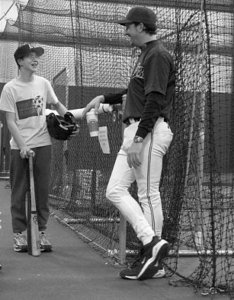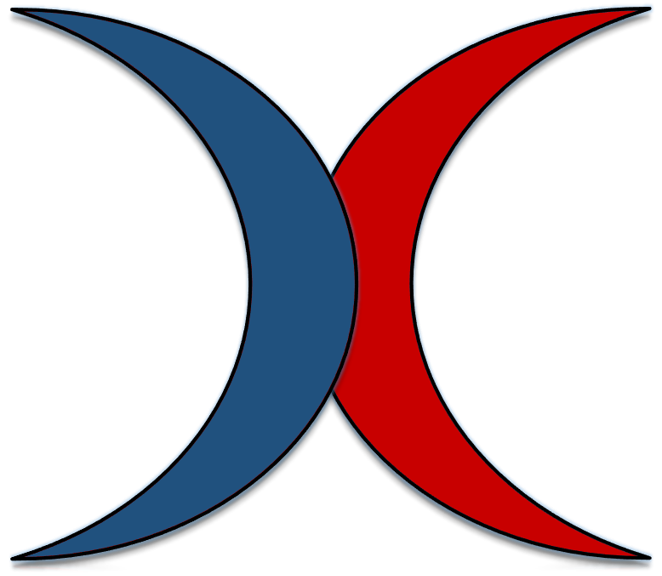About Us
The genesis of the X Factor Hitting System dates back to 2001, a time when the requisite technology for its realization was still in its nascent stages. I jotted down the algorithm, then for 15 years, I honed the concept behind this revolutionary system, using it as a timing training method. This intuitive approach involved synchronizing the speed of a pitch with a hitter’s swing time to various contact points, issuing precise distance commands that enabled hitters to target specific fields based on pitch location. Initially effective in short-cage scenarios and providing a deeper understanding of a three-dimensional strike zone and contact depths, the method faced challenges when scaled to full distances and higher velocities.
A pivotal moment came in 2018 when I collaborated with a nuclear engineer. Unencumbered by preconceived notions typical in baseball circles, he brought a fresh perspective to my concept. Together, we explored the possibility of an innovative hitting system, grounded in a mathematical equation that could coordinate the intersection of two independent bodies – the bat and the ball. The breakthrough idea was to capture the time-over-distance trajectory of each, using specially designed hardware systems and software programs.
This collaboration led to the refinement of the original algorithm and the integration of AI and sophisticated data analytics, transforming the intuitive method into a scientifically backed, predictive model. We developed two capture devices: one to capture and store the hitter’s time to contact, and the other to measure the velocity of live-pitched balls. This marked a significant leap from the initial concept, utilizing technology to address the challenges of full-distance, high-velocity scenarios.
My 15 years of intuitive testing with short distances and low velocities had laid a solid foundation, and the system, enhanced by this technological advancement, lived up to its promise. We tested it with high school and collegiate players, and then with youth players, challenging them with pitch speeds beyond their previous experiences.
The X Factor Hitting System’s transformative aspect lies in its ability to replace guesswork with precision. This makes possible practice with exact timing, significantly enhancing their spatial memory and experience for pitches at any velocity. This accelerated learning process, a departure from traditional methods, offers near-perfect timing accuracy. This journey from concept to reality culminates in the X Factor Hitting System: a fusion of sports science and cutting-edge technology, redefining the art of hitting as not just a training tool, but a paradigm shift in how we understand and teach batting intricacies from what was once either mechanical swing training, or intuitive “go” messages from coaches.
We’re not just confident in our system’s capabilities – we’re eager to prove it. That’s why we are actively pursuing a rigorous, peer-reviewed academic study to substantiate the efficacy of the X Factor Hitting System. Our goal is to not only revolutionize training methods but to also provide solid, scientific evidence of our system’s impact and effectiveness. We believe in the power of data and science to transform the art of hitting, and we’re dedicated to demonstrating this through credible, academic validation.
~ Ken Cherryhomes, Founder of X Factor Technology and Creator of the X Factor Hitting System.
Ken Cherryhomes - Founder
Applied Science and Technology Specialist
Over a span of more than 25 years, Ken has dedicated himself to the art and science of batting training. He’s amassed a wealth of knowledge through rigorous study, meticulous research, and empirical wisdom derived from direct experience, observation, practice, and application. Ken has trained hitters at all levels of baseball and softball, from beginners to Big League players, with unprecedented success. As an associate scout for the Tampa Bay Rays (2004-2014), he focused on player development rather than the traditional role of scout. One of the most sought-after hitting coaches in his area, Ken built, owned and operated three batting cages and has consulted on a number of baseball training related projects. He developed several unique training methods that have been practiced with great success, including a timing-based method that has led to the creation of the X Factor system. His career achievements are built upon real-world results, including the development of players who have been drafted by MLB teams, or played for Division I,II, III, NIAA and Junior colleges.
However, his work largely predates the age of social media and internet marketing. His focus was on in-person training and direct talent development rather than online visibility. Consequently, despite extensive experience and demonstrable success, he may not have widespread recognition in today’s digital landscape. This resume formally presents his qualifications, methodologies, and impact in the field.
From 1998 to 2011, he conducted approximately 40,000 training sessions. Since 2011, he reduced his training volume, focusing primarily on batting technology development, and designing data analysis systems.
He has trained players who have played for nearly every MLB organization. Notably, his 2011 class alone produced 7 MLB-drafted players, including talents such as Michael Conforto, Dylan Davis, and Trevor Mitsui, with more than double that number going on to play Division I baseball from that graduating class.
From 1995 to the present, he has built a substantial career in baseball training and batting tech development with the following highlights:
- Conducted over 40,000 training sessions between 1998 and 2011.
- Trained players who have played for nearly every MLB team.
- The 2011 training class was exceptional, with 7 players from that graduating class eventually drafted into the MLB.
- From 2004 to 2014, served as an associate scout and player developer for the Tampa Bay Rays, focusing on scouting and talent development.
- Privately coached established MLB players from other organizations since 1998, notably Jeff Cirillo.
- 3 granted patents in the field of batting technology.
Case Studies
MLB Players
Jeff Cirillo:
Performance Analysis and Training Impact (Fall 2004-2006)
Before Training with Ken (2003-2004):
- 2003: WAR of -1.4
- 2004: WAR of -0.4
After Training with Ken (2005-2006):
- 2005: WAR of 1.4
- 2006: WAR of 1.6
Scope of Training:
- Primary focus on timing adjustments.
- Minimal mechanical adjustments aimed at base stability and enhancing ground reaction force angles.
- Emphasis on relaxation techniques and swing direction intentions for in-game focus and swing efficiency.

Key Statistical Comparisons:
- Resurgence (2005-2006) vs. Decline (2003-2004):
- Batting Average: Increased from .207 to .304.
- On-Base Percentage: Improved from .278 to .371.
- Slugging Percentage: Rose from .276 to .420.
- Walk-to-Strikeout Ratio: Improved from 1:2 to nearly 1:1.
- Resurgence (2005-2006) vs. Prime Years (1994-2002):
- Batting Average: .304, matching prime years.
- On-Base Percentage: .371, closely aligning with .374 during prime years.
- Slugging Percentage: Rose to .420, approaching the .445 of his prime years.
- Walk-to-Strikeout Ratio: Remained comparable.
Outcome: The primary focus on timing and relaxation adjustments, along with targeted minimal swing changes, led to a significant resurgence in Cirillo’s performance. His WAR values transitioned from negative to positive, signaling a reversal from a period of decline and aligning closely with his prime years.
High school player development
Trevor Mitsui:
Performance Analysis and Training Impact (Fall 2008-2011)
Hitting Development and Achievements (Fall 2008-2011)
2008
- Freshman Year (Pre-training):
- Batting Average: .333
- Hits: 12
- RBI: 6
- Extra-Base Hits: 2 (All doubles)
- Home Runs: 0
2009
- Sophomore Year (1st Year of Training):
- Batting Average: .439 (an increase of .106 from Freshman year)
- Hits: 29 (more than double from previous year)
- RBI: 37 (over six times the previous year’s total)
- Extra-Base Hits: (14) 10 doubles, 4 home runs
2010
- Junior Year (2nd Year of Training):
- Batting Average: .507 (further increase up .068, from previous year, +.174 from pre-training freshman year)
- Hits: 36
- RBI: 31
- Extra-Base Hits: 9 doubles, 1 triple, 11 home runs
2011
- Senior Year (3rd Year of Training):
- Batting Average: .712 (remarkable increase up .205 from previous year, +.379 from freshman year)
- Hits: 37 (consistent with Junior year in fewer at-bats)
- RBI: 26
- Extra-Base Hits: 7 doubles, 1 triple, 13 home runs
- Strikeouts: 1
- Walks: 42
Notable Achievements in 2011 (Senior Year):
- Gatorade Player of the Year Washington State.
- National Runner-Up for Gatorade Player of the Year.
Outcome: Under Ken’s guidance, Mitsui’s offensive capabilities saw marked improvement, transforming him from a primarily opposite-field hitter in his freshman campaign prior to training with Ken, to one that utilized the entire field effectively. By his Senior year, his batting average, power numbers, discipline at the plate, and overall production peaked, making him one of the most formidable hitters in the nation. This transformation is a testament to the comprehensive training approach focusing on timing, contact points, relaxation techniques, and pitch recognition that is at the core of Ken’s training philosophy as well as the core of his technologies.
